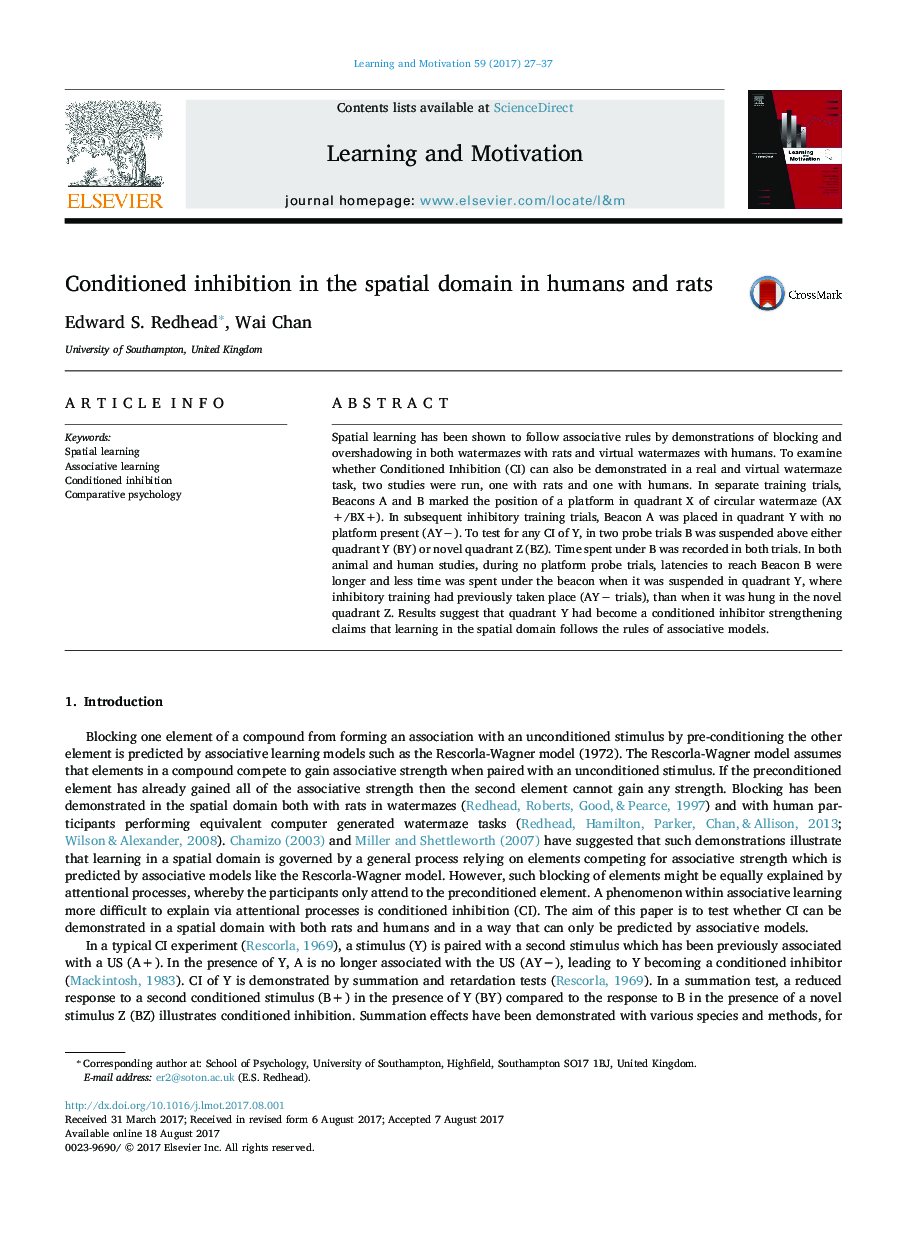| کد مقاله | کد نشریه | سال انتشار | مقاله انگلیسی | نسخه تمام متن |
|---|---|---|---|---|
| 5040100 | 1473509 | 2017 | 11 صفحه PDF | دانلود رایگان |
- Demonstration of Conditioned inhibition in spatial domain in both Rats and Human studies.
- Results suggest Spatial learning in both humans and rats follow rules governed by associative models.
- Similarity of results in the studies add validity to use of digital watermaze to measure spatial learning.
Spatial learning has been shown to follow associative rules by demonstrations of blocking and overshadowing in both watermazes with rats and virtual watermazes with humans. To examine whether Conditioned Inhibition (CI) can also be demonstrated in a real and virtual watermaze task, two studies were run, one with rats and one with humans. In separate training trials, Beacons A and B marked the position of a platform in quadrant X of circular watermaze (AX+/BX+). In subsequent inhibitory training trials, Beacon A was placed in quadrant Y with no platform present (AYâ). To test for any CI of Y, in two probe trials B was suspended above either quadrant Y (BY) or novel quadrant Z (BZ). Time spent under B was recorded in both trials. In both animal and human studies, during no platform probe trials, latencies to reach Beacon B were longer and less time was spent under the beacon when it was suspended in quadrant Y, where inhibitory training had previously taken place (AYâ trials), than when it was hung in the novel quadrant Z. Results suggest that quadrant Y had become a conditioned inhibitor strengthening claims that learning in the spatial domain follows the rules of associative models.
Journal: Learning and Motivation - Volume 59, August 2017, Pages 27-37
